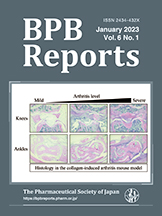Volume 6, Issue 4
Displaying 1-6 of 6 articles from this issue
- |<
- <
- 1
- >
- >|
Review
-
2023 Volume 6 Issue 4 Pages 126-132
Published: 2023
Released on J-STAGE: July 26, 2023
Download PDF (1847K) Full view HTML
Report (Case Report)
-
2023 Volume 6 Issue 4 Pages 133-135
Published: 2023
Released on J-STAGE: July 26, 2023
Download PDF (789K) Full view HTML
Report
-
2023 Volume 6 Issue 4 Pages 136-140
Published: 2023
Released on J-STAGE: August 04, 2023
Download PDF (2615K) Full view HTML
Report
-
2023 Volume 6 Issue 4 Pages 141-143
Published: 2023
Released on J-STAGE: August 04, 2023
Download PDF (715K) Full view HTML
Regular Article
-
2023 Volume 6 Issue 4 Pages 144-149
Published: 2023
Released on J-STAGE: August 22, 2023
Download PDF (3554K) Full view HTML
Regular Article
-
2023 Volume 6 Issue 4 Pages 150-154
Published: 2023
Released on J-STAGE: August 30, 2023
Download PDF (804K) Full view HTML
- |<
- <
- 1
- >
- >|
